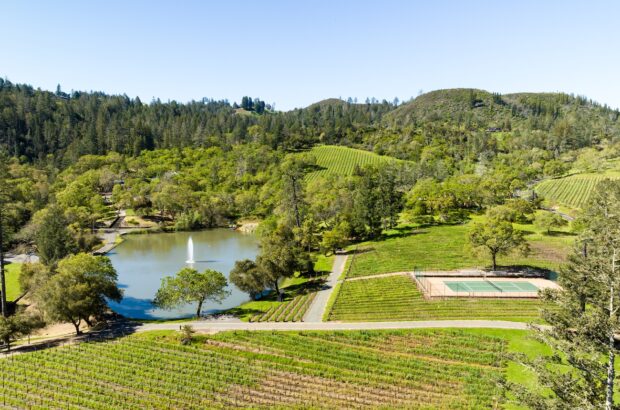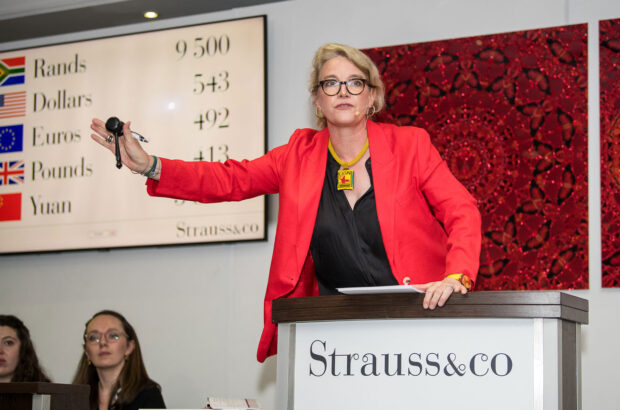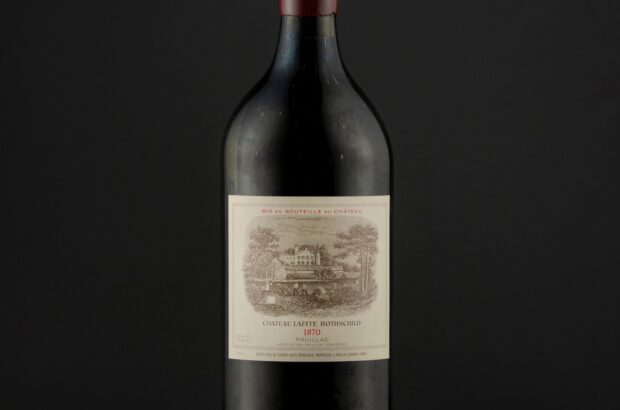French winemakers will likely see the country’s 2021 harvest go down as the smallest for several decades, the country’s ministry of agriculture said this month.
With forecast production of 33.3 million hectolitres, one would have to go back to 1977 to find a vintage of comparable size, said the ministry’s statistics service, Agreste. Even in ’77, the overall crop was larger than the projected 2021 harvest – because France’s vineyard area was bigger in the 1970s.
From Bordeaux to Champagne, there is barely a region untouched by difficult weather conditions to varying degrees. Severe spring frost and early summer mildew attacks have been the main culprits, but not exclusively.
Yet it’s early days, with grapes still to be picked in major regions. Early feedback suggests a mixed picture between vineyards, and there is also hope regarding quality.
Languedoc
‘The quality is superb but unfortunately [there is] very little fruit,’ said Samuel Guibert, winemaker and co-owner at Mas de Daumas Gassac in the Hérault area of Languedoc. ‘Our estimation is that we have lost about 50% of the white due to the frost, and about 30% of the rosé,’ he told Decanter via email, adding that 40 pickers began harvesting grapes for white and rosé wines on 6 September.
He said he expected yields of around 26 hectolitres per hectare for the whites. For the reds, yields were likely to be around 25hl/ha, compared to a more normal 33 to 35hl/ha.
Champagne
In Champagne, the overall harvest could be the smallest for 40 years, Agreste said. Again, however, the true picture will be more complex.
Anne Malassagne, co-owner of family-run producer AR Lenoble, said she anticipated overall losses of around 40%, but the situation could still change in the next 10 days.
‘Overall at AR Lenoble, the Pinot Meuniers were more affected than the Pinots Noirs. Our Chardonnays in Chouilly suffered less,’ she said.
‘It is still too early to estimate the quality, which could be good. The mildew impacted the volumes but not the quality.’
AR Lenoble began picking its Pinot Noir this week but will wait a little longer on the Chardonnay. ‘It will be necessary to sort in the vineyard and then be very attentive during the vinification to make the right decisions,’ Malassagne said.
Burgundy
In Chablis, the Drouhin winemaking family said, ‘The harvest in Chablis is low to very low because of the frost. Where frost protection has been successful, the harvest is fine, but the protected areas are small.’
Julien Brocard, of the Brocard winemaking family and Domaine des 7 Lieux, also said Chablis was hit hard by frost, even if the vines were well protected against mildew later in the season.
‘The weather conditions forced us to be very vigilant and responsive throughout the year,’ he said. However, he added, as of now, ‘The vines are beautiful with a significant disparity in maturity between the crus. Harvest begins next Monday and we will be able to harvest at the optimum dates for each plot.’
Elsewhere in Burgundy, a spokesperson for regional wine body, the BIVB, told Decanter, ‘The situation is too complex with damages everywhere but heterogeneous: some plots have been preserved [while] their neighbours have been hit. Sometimes it is from one row [of vines] to the other that you can see differences.’
She said it was still too early to make concrete statements about harvest size, but total volumes could be lower than the relatively small year of 2016.
‘All Bourgogne was hit’, she said, but added that ‘Côte de Nuits and Hautes Côtes seem to have been more preserved, especially for red wines’.
Bordeaux
In Bordeaux, Sauvignon Blanc has been particularly hard-hit, according to France’s agriculture ministry.
More generally in the region, ‘everybody is concerned about the yield, because of the mildew and the frost’, said Emmanuel Cruse, co-owner of Château d’Issan. He highlighted significant variation between vineyards, however.
At d’Issan, yields could be around 40 hectolitres per hectare – slightly up on last year – because mildew issues were relatively light and frost largely hit vines in the Arsac area, which are not used for the estate’s grand vin.
But Château Pédesclaux in Pauillac, where Cruse is also general manager, could see 2021 yields down by around 30% versus 2020. In 2021, ‘if you ask 10 people you will get 10 different answers,’ Cruse said, speaking to Decanter this week following the sale of Château Lafon-Rochet.
Harvesting began at Château Canon in St-Emilion this week, and the team said technical staff needed to be extra-vigilant for the grapes coming in. ‘The Merlots that we collect are nevertheless of great aromatic expression and complexity,’ the Château said. Picking begins at sister estate Rauzan-Ségla in Margaux on Monday (20 September).
Elsewhere in France
While France is set to see its 2021 wine harvest come in around 29% lower than the five-year average, some regions may fare worse. Jura, for example, could see a harvest around 80% smaller than usual, according to Agreste estimates published on 6 September.
Yet Alsace was not so badly affected by frost, and overall yields there for appellation wines might be 17% down on the five-year average, Agreste figures show.
Frost and mildew have not been the only issues in the 2021 growing season. Provence’s wine body, the CIVP, said in August that it believed around 30 wine estates had suffered at least some damage from fierce wildfires in the Var area. The full picture was unclear, however, and the body thanked emergency services for all their efforts to contain the fires.
Provence’s total vineyard area stretches across 200 kilometres and the CIVP also said in August that harvest size was still hard to estimate. It said ‘sanitary conditions’ in many vineyards had been largely good during summer and there were signs that frost impact may not be as bad as initially feared.
Related articles
€1bn of aid promised to frost-hit French vineyards and farmers







